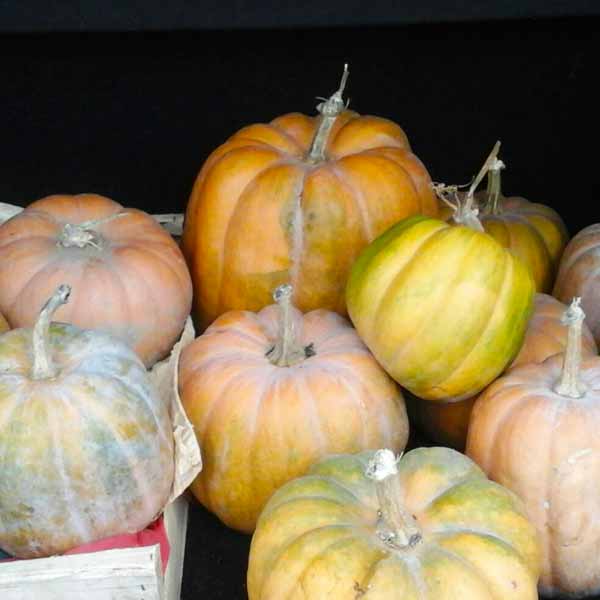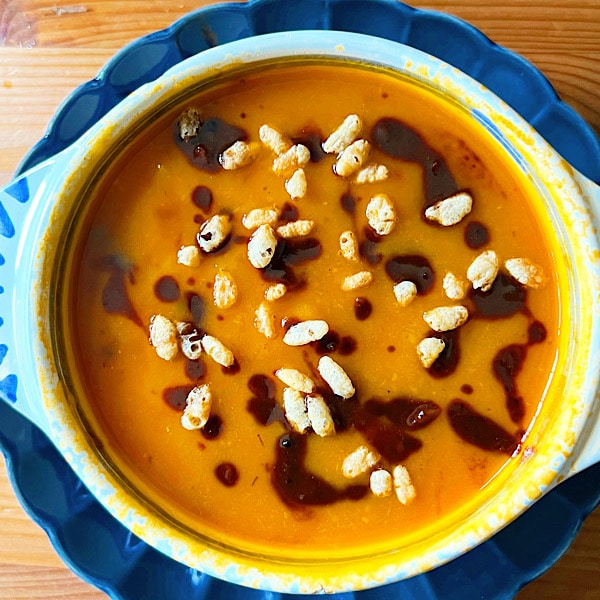
In France, pumpkins, like other winter squash, are sold by weight. This can make a great big Halloween jack o’ lantern prohibitively expensive (I know. I’ve blown my wad on thirty-pound pumpkins before….), but it’s a big plus for cooks who don’t necessarily need a ten or fifteen-pounder just to make soup or pie. Instead of a whole gourd, you can buy a weighed-out wedge that meets your needs.
I’d like to say I buy pumpkin wedges, but fall generally means a pumpkin (or pumpkin-like squash) glut in my kitchen. Another way of putting it: I don’t find pumpkins. Pumpkins tend to find me. Last year, after my friend Cécile brought a trunkload of beautiful Musquée de Provence pumpkins from her parents’ farm to carve for Halloween, I couldn’t bear to chuck them on November 1 and ended up with gallons of pumpkin purée to use in bread, cakes, pies, soups and jam.
This year, the pumpkins started rolling in back in August when René, a summertime neighbor with a big garden at his house in Rennes, planted what he thought were zucchini plants but were actually some sort of green, pumpkin-shaped squash that he and his wife weren’t sure what to do with. (I made “green squash” jam.) Then in September, Betrand, a friend delivering some furniture, also delivered a 20-pound pumpkin (a real orange one this time). Garden-grown pumpkin is too good to end up as a jack o’ lantern, so Bertrand’s pumpkin currently lords it over my kitchen counter until I find the time and courage to crack it open. That’s one good thing about pumpkins. Until they’re cut, they will keep a while.
I have prepared pumpkin in just about every way possible. I’ve peeled and cubed it for soups and purée, I’ve cut it into chunks for vegetable roasts, and I have even finely diced it for a jam recipe I tried. (Never again.) Nowadays, unless I have to have solid shapes (cubes, wedges, whatever), I roast it, then scoop out the flesh. This method always seems to surprise French cooks, which makes me want to say…Duh! Which would you rather do? Spend hours peeling and cubing a super-hard vegetable that you’re just going to boil and mash, or simply shove said vegetable into the oven until it’s cooked and soft and practically pre-puréed?
1 1/2 cups of pumpkin flesh (well-mashed or even blended if the pumpkin you use happens to be stringy) is the tastier equivalent of one 15-oz. can and can be frozen for later use. And that pumpkin purée is a whole lot handier than a whole pumpkin or even a wedge.
Halve and seed pumpkin, and set cut side down on parchment-lined baking sheet. Bake 1 hour in a 350˚F (180˚C) oven, or until pumpkin is soft enough to collapse when touched. Cool, and scoop out flesh. 1 lb. pumpkin yields about 1 cup flesh.




Leave A Comment